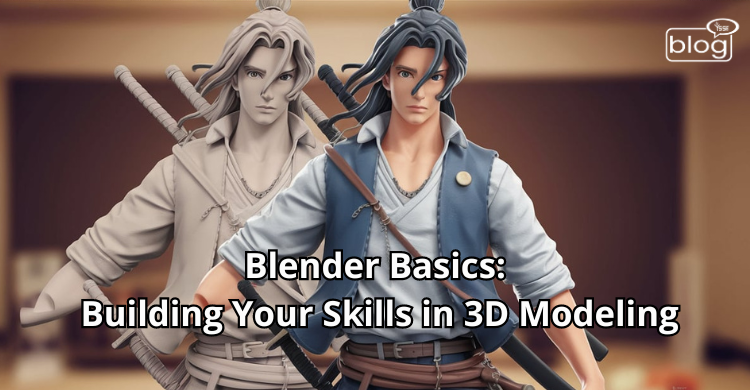Do you watch animated movies? No matter our age, from children to grown adults, we all appreciate and enjoy watching good animated movies. Have you ever thought about how these movies are made? How is the attention to detail created in every scene? Not just animating movies, game development, art, architectural structures- all of these are made through a process called ‘3D Modeling’. 3D modeling is a vast and exciting world that allows one to create anything on a 3D surface.
To create any 3D model, we need an application that has all the functions to create a 3D model. Blender is a 3D modeling application and it contains all the functions you need. And the most exciting part of this application? It is 100% free. You just download and install the application and you are good to go. But the 3D modeling is a complex process. To use the application you need a proper grasp of the functions it has. So, let’s dive right in:
Diving into the Interface:
At first glance, the interface of Blender might overwhelm you. But if you spend time exploring the tools and functions, you will find these surprisingly intuitive.
The key areas of the interface are:
- 3D Viewport: The main workspace. Here you will see the model that you are trying to create. You can change angles and perspective.
- Properties Panel: This panel shows the properties of the model. You can edit the color, texture, size, etc.
- Tool Shelf: Various tools are housed in this section which are used to modify the model or create new objects.
- Outliner: This panel provides a hierarchical view of your scene. The elements of the scene are listed and all the objects, lights, and cameras are shown. You can select them individually or multiple items at a time.
Modeling Techniques:
Since you already know the layout, let’s go through some fundamental modeling techniques:
- Primitive shapes: Blender comes with basic shapes such as cubes, spheres and cylinders. These are the building blocks for creating more complicated models. Combining them allows you to make a variety of objects.
- Extrude & Inset: Use these tools to expand or collapse your model facets so that it becomes deeper and more detailed. This is important for making complex shapes.
- Modifiers: These are powerful tools that can be used to manipulate the geometry of your model without any damage. Some of the things you can do using modifiers include smoothing curves, adding arrays, bevels, and other effects.
- Sculpting: With Blender’s sculpting tools, one can shape their models organically hence suitable for developing characters, creatures, and organic forms.
Resources and Tutorials:
The best way to master Blender is through consistent practice. Here are some resources to help you on your journey:
- Official Blender Documentation: Blender has extensive documentation covering every aspect of the software. It’s a valuable resource for in-depth learning.
- Online Tutorials: Countless online tutorials cater to all skill levels. Platforms like YouTube offer a wealth of free tutorials on specific modeling techniques and projects.
- Blender Guru: This popular YouTube channel by Andrew Price is a fantastic resource for beginners and intermediate learners. His tutorials cover a wide range of topics in a clear and engaging manner.
- Polygon Runaway: This YouTube channel is for advanced learners who know the basics of Blender and want to create complex and fun models and animation.
Once you understand modeling fundamentals, take time to toy around with materials, lighting, and rendering. Blender comes with strong rendering engines that produce realistic images and animations. However, you need a PC or a laptop that is capable of handling these complex scenes. A dedicated GPU is recommended to run this application smoothly.
The world of 3D modeling opens up endless opportunities for creativity. By using Blender as the tool and committing yourself to discovering more you will be able to create anything you want. You can give existence to your imagination through 3D modeling. The industry of 3D is still growing and evolving and has a lot of potential. With Blender as your tool and a commitment to learning, you can be a part of this dynamic field and contribute your unique vision to the ever-expanding world of 3D.
To read more blogs like this, click here.
Writer,
Abdul Ahad Bin Feroz
Intern, Content Writing Department,
YSSE.

